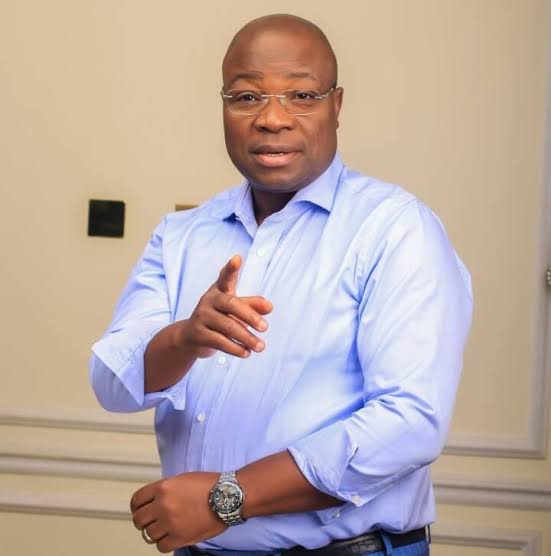
How Nigeria’s Star Beer survived a checkered seventy years
Imagine your life as a huge Olympic sport of hurdle jumping at 70. Imagine yourself playing in a super league at the ripe age of 70. Blowing out 70 candles isn’t an easy job for a seventy-year old man. Each year you lived meant that you have survived all sorts of potential causes of death. It means you didn’t die of any disease when young, car accidents, or a broken heart in your teens. The same also applies to brands. The only difference is that they are not allowed to shrivel or dry up like humans. Brands are meant to look fresh forever despite their age.
For Nigerian Breweries (NB) Plc and Nigerians fond of Star lager beer, 2nd June, 1949, was arguably the biggest day in history. That Thursday, Star became the number one locally brewed and national lager beer brand to be launched into the virgin beer market in colonial Nigeria. The beer culture, according to history, was so elitist and alien to many young working class Nigerians at the time because the beer brands present, were all imported before the introduction of Star.
Once brewed and labeled, Star began its brand and marketing journey across the length and breadth of the country. Despite the presence of Heineken, a premium imported lager brand on the stable of NB, Star was able to identify a material point of uniqueness on the national psychographics and quickly increased volume and profitability for the company.
So, at the early stage of its rise to stardom, Star beer was in competition only with foreign beer brands, whiskey and palm wine. But by the eve of Nigeria’s independence in 1960, Star was already a national market leader and needed no introduction at parties and ceremonies. Ever since then, it has been holding its own in the Nigerian beer market with a rich heritage in communities across the country.
In terms of branding and marketing — and to match the psychographics of the Star beer consumer — that young or middle-age Nigerian full of aspiration, inspiration, imagination, pursuits, creative brilliance and dreams, the brand owners used star as a symbol of rank on the logo and brand name.
The beer culture resonates more with young and early middle-age consumers who are drawn to a dynamic level of fandom. As part of its gentlemanly marketing communication strategy, NB introduced the cartoon character, “Sammy Sparkle” in 1951. Nigerians who were born in the 1970s and 1980s only grew up to hear that tagline on the lips of their fathers and older uncles. To retain its top-of-mind awareness (TOMA) position, Star has always been marketed with youthful and entertaining associations and aspirations.
Star has also endured through some incredible moments in Nigeria’s history, such as the country’s struggle for independence before it was achieved in 1960 and the Nigeria-Biafra civil war. So, to say that Star is the country’s numero uno beer is well in order.
But Star didn’t persevere as long as it did by being complacent. Time and again, the custodians made bold business decisions that, through the many travails of seven decades, has left it standing. The lager brand has seen countless makeovers and, in recent times, a few extensions. And some of these brand-building and marketing strategies are not devoid of risks. In fact, more often, they do more harm than good. But innovation is a testament to the tolerance of risk taking. The question is: how much risk can brand owners take on brand building and recalibration without eroding the equity of a leading brand?
Meanwhile, Star, in its long colonial heritage has never lagged behind in areas of defending its market position against challengers coming at it from within and without. Apart from peripheral challengers daring it in regional markets, Harp lager beer was perhaps the major brand that gave Star a run for its money at the national level. But Harp went on some retreat for years until 2005, when Guinness Nigeria Plc relaunched it back into the Nigerian market. Ever since then, not much has been seen in terms of a neck to neck horse race between Star and Harp at the national market level.
To retain its central position, Star has maintained a careful brand engineering and product development to align with (or even shape) popular tastes through heavy marketing, advertising, entertainment and, in 2018, sports marketing. Apart from Harp lager whose challenge to Star has been lightweight to say the least, Star has not faced a major contender for many years at the national level.
But since the entrance of SABMiller, the world’s second largest brewer which was later acquired by the world’s largest brewer, AB InBev, the lager beer market has been heading towards what analysts refer to as a triangular beer war. Before the competition intensified, Star blazed a trail in market migration by extending itself, first, to Star Lite in 2009 and then with Stella lager brand in 2017.
Brand extension is one of the marketing strategies employed by brand owners to increase their revenue and customer base. When a brand’s equity gets as powerful as currency, the tendency for extension also becomes higher. Rather than spend on established brands to maintain its TOMA status, many managers spend on extensions which, sometimes, lead to the erosion of the existing equity. More often, managing the market consequences could be quite tricky as part of the fallouts may be intra competition.
Market intelligence reveals that Star hasn’t lost its national status to any lager brand yet. But the youth demographics shift in choice in a lager saturated market has had a seismic impact on Star’s mind and market share. It is important to mention that in contemporary Nigerian lager beer market, differentiation is no longer measured in good versus bad but great versus also great. Brands that were perceived as regional and poorly brewed beers in the 1980s and 1990s are well made and filtered today to meet the taste of even corporate executives. Nigerian Breweries owns several brands in the regional lager segment. And so do its major competitors, Guinness and AB InBev. While Guinness Nigeria recently joined the fray by launching Guinness Gold into the lager category, AB InBev introduced a global brand, Budweiser, popularly known as King of Beer, into the already flooded lager market. It is therefore increasingly important for Star to put more time, thought, and effort in not just retaining its national position but to also retain the ROI commensurate with such status.
The 70th Anniversary of Star, which should be the celebration of Nigeria’s colonial heritage, is being managed in low-key format for strategic reasons. But apart from evoking nostalgic feelings on old consumer loyalty, the occasion should be utilised to continue to reinvent Star in order to help it retake its TOMA in every generation of the youth demographic. Even though the market dynamics has changed so much in the last seven decades, the brand owners should not allow young and disruptive lager brands to bully Star around. Star should remain not only a national brand but also a best-seller.
Brand leadership is ephemeral and elusive. The red carpet could be pulled from under the feet of a leading brand overnight. Star’s brand image has shined radiantly over half a century. And as it celebrates its 70th year and beyond, Star must realise that its cultural and historical relevance is almost as important as its strong youthful image. Unlike humans, brands don’t grow old. They may acquire heritage, but are strictly forbidden to wrinkle. Any brand that grows old must either die naturally or by euthanasia. As it matches towards a century, Star should continue to drink its brand and marketing elixir if it must retain its national leadership.






Comment
No comments found.